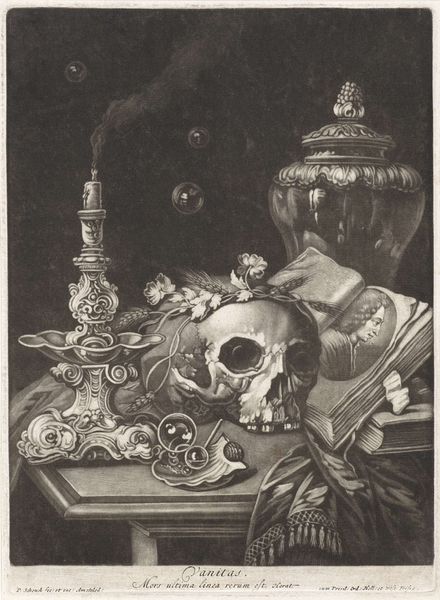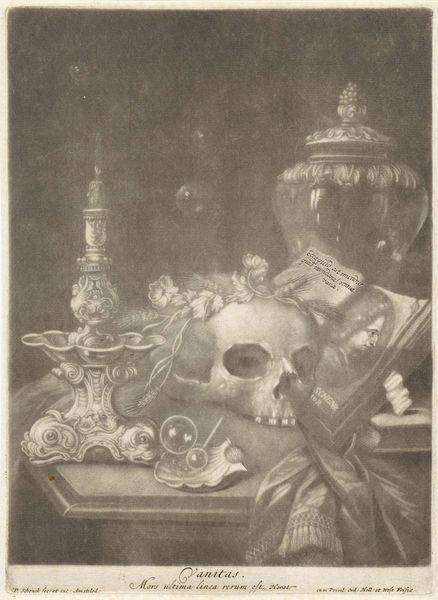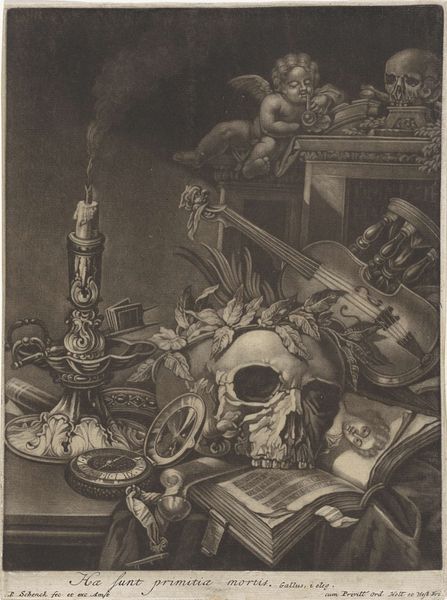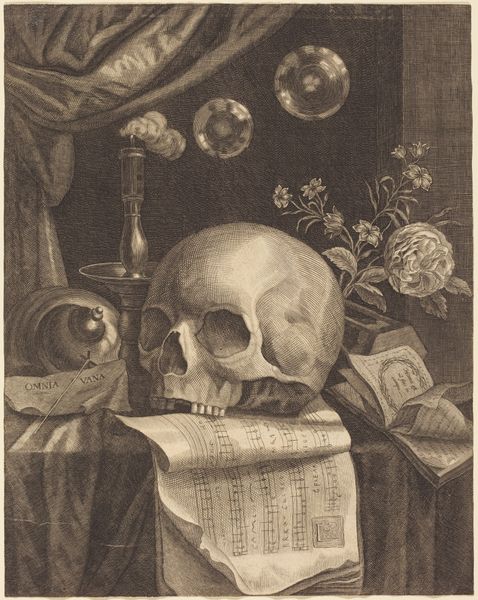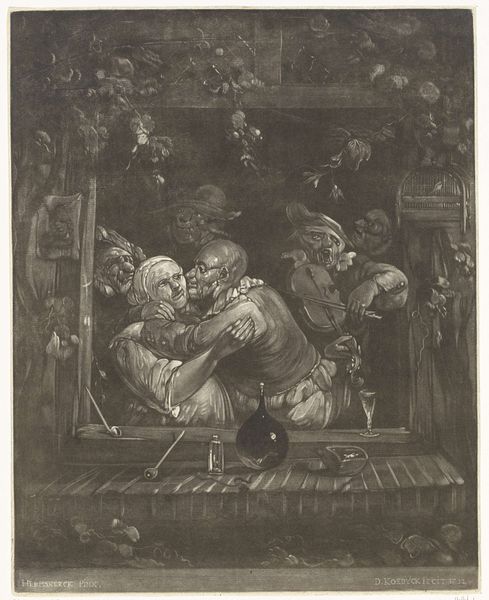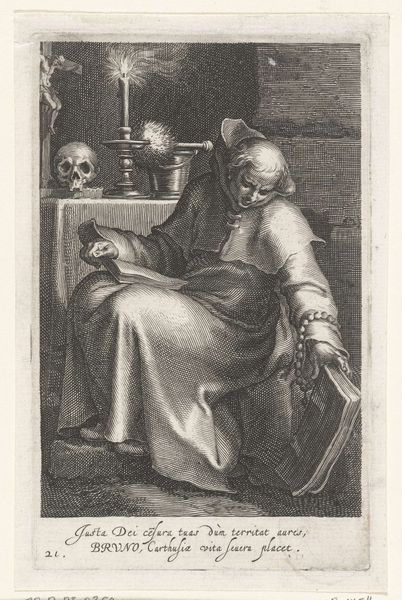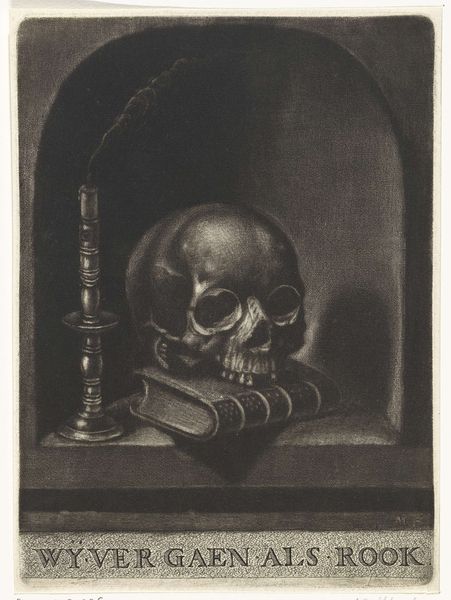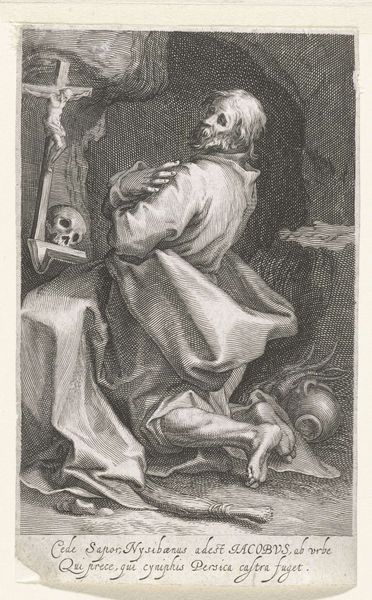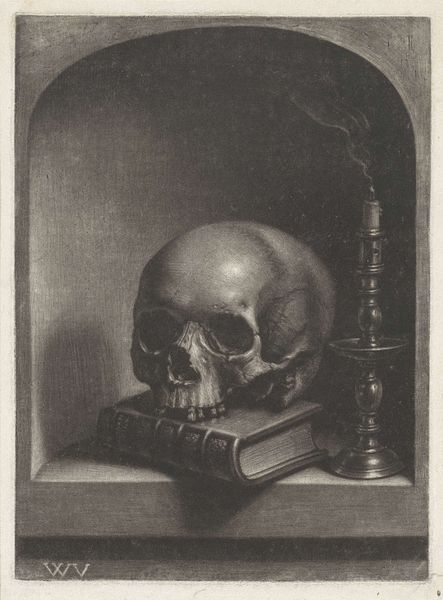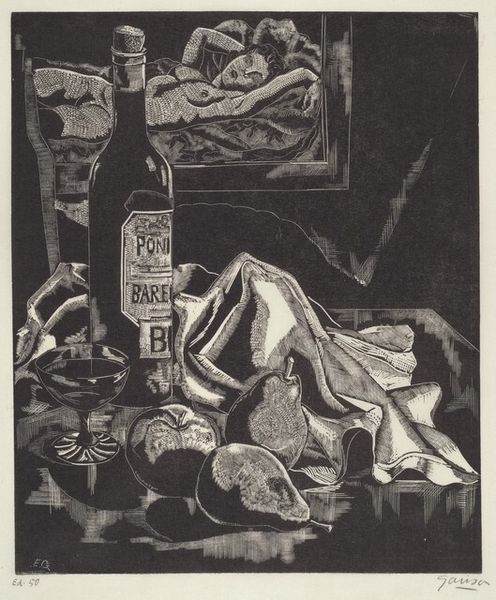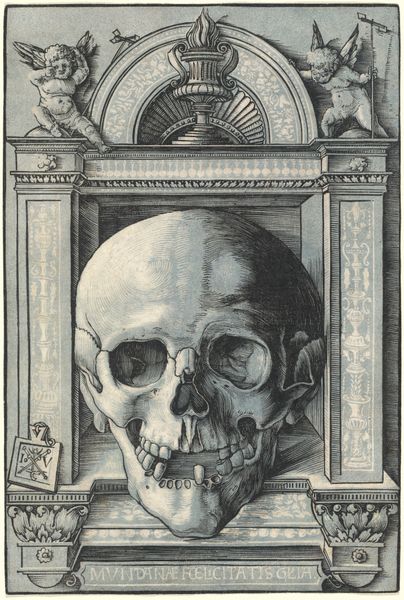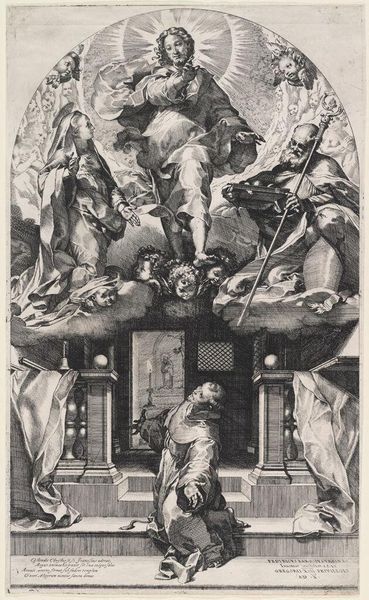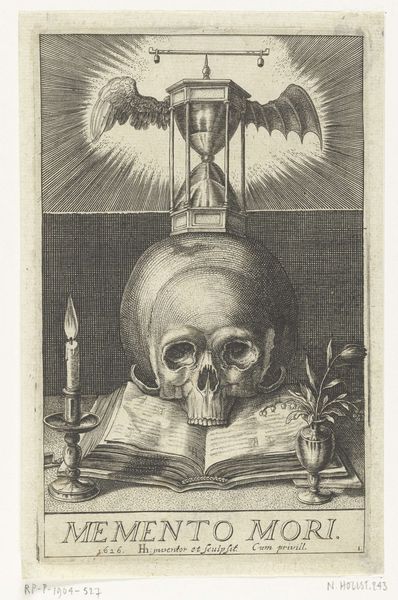
print, etching, engraving
#
baroque
# print
#
etching
#
charcoal drawing
#
figuration
#
form
#
vanitas
#
line
#
history-painting
#
engraving
#
monochrome
Dimensions: height 250 mm, width 188 mm
Copyright: Rijks Museum: Open Domain
Editor: This is "Vanitasstilleven met een schedel en zeepbellen," or "Vanitas Still Life with a Skull and Soap Bubbles," made in 1688 by Pieter Schenk. It's an etching and engraving. It feels somber, filled with symbols of mortality, but what stands out to me is how skillfully the artist renders the different textures in monochrome. How do you interpret this work, looking at its materiality and creation? Curator: The choice of etching and engraving is critical here. It's not about capturing life-like color; it's about the deliberate, laborious process of marking and incising. Consider the cultural context: the rise of printmaking allowed for wider distribution of images. What does it mean to mass-produce images of mortality? It transforms death from a personal tragedy to a commodity, doesn't it? Editor: That’s a fascinating point. It’s about the industrialization of a traditionally individual experience? But isn't that also a little at odds with the vanitas theme, which typically is focused on *individual* reflection? Curator: Precisely! This tension is key. Look closely at the skull itself. It’s the central motif, but think about how skulls were sourced. Were they readily available? Did artists collaborate with medical institutions? These material considerations influence our understanding. It makes one wonder about the social implications around mortality in that period. How does seeing the "handmade" etching in contrast to the "naturally decaying" skull change things? Editor: That makes me think differently about it. The active construction of the image through these industrial printing processes gives "vanitas" an active tone rather than being passive and about death itself. Curator: Exactly! Now, we see beyond just mortality, understanding production and consumption shaping perspectives, which provides a new layer of reflection when experiencing art in different spaces like this museum.
Comments
No comments
Be the first to comment and join the conversation on the ultimate creative platform.
